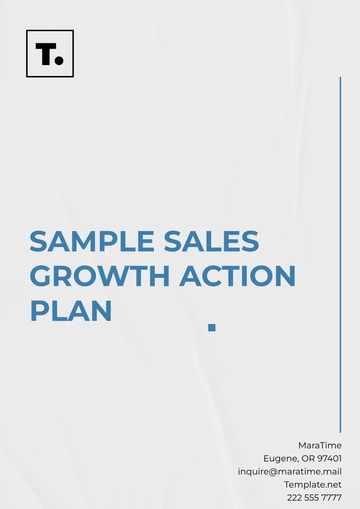Free Mural Quarterly Planning Board

Introduction
As we embark on the first quarter of 2055, our primary focus will be on the successful launch of Product X. This planning board serves as a collaborative tool to align our team on key projects, set measurable goals, and track our progress. By visualizing our objectives and responsibilities, we aim to enhance communication, increase accountability, and ensure that everyone is aligned with our mission. The following sections outline our vision, goals, key projects, and a detailed plan for execution throughout the quarter.
1. Vision & Goals
Vision Statement:
To successfully launch our innovative product line while enhancing brand awareness and customer engagement through targeted marketing strategies and exceptional customer service.
Quarterly Goals:
Launch Product X by the end of Q1.
Increase website traffic by 25% through strategic digital marketing initiatives.
Achieve a customer satisfaction score of 90% or higher by proactively addressing customer feedback.
Grow social media following by 15% through engaging content and community interactions.
2. Key Projects
Project Name 1: Product Launch
Objective: Successfully launch Product X, ensuring all aspects are ready for market.
Team Members:
Alex (Project Manager)
Jamie (Marketing Lead)
Chris (Design Lead)
Key Milestones:
Complete final design by January 15: Ensure all design elements align with brand identity and customer expectations.
Start production by February 1: Coordinate with suppliers and manufacturers to begin production smoothly.
Launch date: March 30: Execute a comprehensive launch plan, including events and promotions.
Project Name 2: Marketing Campaign
Objective: Drive traffic and engagement for Product X through various marketing channels.
Team Members:
Jamie (Marketing Lead)
Pat (Social Media Specialist)
Key Milestones:
Campaign strategy finalized by January 20: Develop a detailed strategy encompassing social media, email marketing, and online advertising.
Ads live by February 15: Launch targeted advertising campaigns across multiple platforms.
Initial results review by March 10: Analyze the effectiveness of marketing strategies and make necessary adjustments.
Project Name 3: Customer Feedback Initiative
Objective: Gather and analyze customer feedback post-launch to inform future improvements.
Team Members:
Chris (Design Lead)
Sam (Customer Support)
Key Milestones:
Feedback surveys created by April 1: Design and distribute surveys to collect customer insights and experiences.
Analyze results by April 15: Review feedback to identify trends and areas for enhancement.
3. Monthly Breakdown
January:
Key Tasks:
Finalize product design to ensure readiness for production.
Develop a comprehensive marketing strategy to maximize launch impact.
Goals for the Month:
Complete design by January 15: Confirm all design aspects are aligned with product specifications and market demands.
Campaign strategy finalized by January 20: Ensure all team members are aligned on the marketing approach.
Important Dates:
Product design review meeting: January 10—Evaluate design and address any last-minute changes.
February:
Key Tasks:
Start production and monitor quality to ensure standards are met.
Launch a marketing campaign to generate buzz and anticipation for Product X.
Goals for the Month:
Production starts by February 1: Begin manufacturing while adhering to the timeline.
Ads live by February 15: Implement the advertising strategy effectively.
Important Dates:
Production status update: February 28: Review production progress and make adjustments as necessary.
March:
Key Tasks:
Launch Product X and execute promotional events to drive initial sales.
Monitor customer engagement through feedback and sales metrics.
Goals for the Month:
Launch on March 30: Successfully introduce Product X to the market.
Important Dates:
Launch event: March 30: Host an event to celebrate the launch and generate media coverage.
4. Metrics & KPIs
Key Performance Indicators:
Product launch success: measure on-time delivery and initial sales performance against projections.
Website traffic increase: Track growth through analytics tools to assess the impact of marketing efforts.
Customer satisfaction score: Utilize feedback mechanisms to gauge customer experiences and satisfaction levels.
Progress Tracking:
Utilize checkboxes and progress bars in Mural for visual tracking of project milestones and team responsibilities.
5. Team Responsibilities
Alex (Project Manager):
Oversee product development, timelines, and resource allocation to ensure project success.
Jamie (Marketing Lead):
Develop and implement the marketing strategy, ensuring alignment with overall business objectives.
Chris (Design Lead):
Manage product design, ensuring it meets customer expectations and market trends.
Pat (Social Media Specialist):
Execute social media campaigns, engaging with customers and monitoring brand presence online.
Sam (Customer Support):
Assist with gathering customer feedback and responding to inquiries post-launch.
6. Risks & Mitigation
Potential Risks:
Production delays due to supply chain issues or manufacturing challenges.
Poor customer engagement in marketing efforts results in low initial sales.
Mitigation Strategies:
Conduct regular check-ins with the production team to identify and address potential delays early.
Adjust marketing strategies based on initial engagement data to enhance outreach effectiveness.
7. Feedback & Reflection
What worked well:
Early planning and collaboration led to clear deadlines and team accountability.
Areas for Improvement:
Enhance communication among team members to ensure alignment and timely updates.
Next Steps:
Schedule bi-weekly check-ins to maintain alignment and address any emerging challenges promptly.
Visual Elements
Sticky Notes: Use different colors for each project to enhance visibility.
Icons: Incorporate icons for deadlines, tasks, and team members to facilitate quick reference.
Progress bars: Utilize progress bars to visually indicate the status of each project, ensuring transparency.
- 100% Customizable, free editor
- Access 1 Million+ Templates, photo’s & graphics
- Download or share as a template
- Click and replace photos, graphics, text, backgrounds
- Resize, crop, AI write & more
- Access advanced editor
Streamline your project management with the Mural Quarterly Planning Board Template. This customizable template is designed to enhance collaboration and organization, making it easy to outline goals and track progress. Downloadable and printable, it offers flexibility for both digital and physical planning. Additionally, it’s editable in our AI Editor Tool, ensuring you can tailor it to fit your unique needs.





























